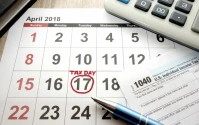Outback Steakhouse's Closures Aren't a Failure—They're a Necessary Evolution!
Okay, folks, let's talk Outback Steakhouse. I know, I know—the headlines are grim. "21 Locations Shuttered," they scream. "Turnaround Plan Costs $75 Million!" It sounds like a recipe for disaster, right? But hold on a second. Let's not write off the Aussie-themed chain just yet. I see something else here: a phoenix rising from the ashes, a chance to reinvent itself in a rapidly changing dining landscape.
See, Outback's parent company, Bloomin' Brands, isn't just throwing money at the wall. They're strategically reallocating resources. They're admitting that the old model—the one with the massive menus and sprawling dining rooms—isn't cutting it anymore. And honestly, isn't that refreshing? They’re not renewing leases, they're shrinking kitchens, and they're focusing on…gasp…takeout. I know, I know, the article even questions the appeal of takeout steak, but I think they’re missing the point.
A Restaurant Renaissance?
This isn't just about cutting costs; it's about adapting to a new reality. Look at LongHorn and Texas Roadhouse. They're thriving, not because they're stuck in the past, but because they offer something that resonates with today's diners: affordable, consistent quality and a fun, casual atmosphere. Outback needs to find its own unique angle, its own reason for being.
And that's where the $75 million comes in. Bloomin' Brands is promising "better-quality steaks" and "more attentive service." They're giving the surviving restaurants a makeover, with brighter interiors and bigger order pickup stations. This isn't just a facelift; it's a complete overhaul, a chance to create a dining experience that's both modern and memorable. I honestly think this is the kind of proactive move that reminds me why I got so excited about business strategy in the first place.

It’s like the shift from brick-and-mortar bookstores to online retailers. Remember when everyone thought independent bookstores were doomed? Some closed, sure, but the ones that survived did so by curating unique selections, hosting events, and creating a sense of community that Amazon couldn't replicate. Outback can do the same thing. They can become more than just a place to grab a steak; they can become a destination, a place where people come for the food, the atmosphere, and the experience.
But here’s the question: Can Outback truly differentiate itself in a crowded market? Can it offer something that LongHorn and Texas Roadhouse can't? That's the million-dollar question, isn't it? I think it can, but it's going to take more than just better steaks and brighter interiors. It's going to take a deep understanding of what today's diners want, and a willingness to experiment and innovate. What if they partnered with local breweries to offer unique beer pairings? What if they hosted live music events featuring up-and-coming Australian artists? The possibilities are endless.
And let's be honest, this isn't just about Outback. This is about the entire restaurant industry. The old model is broken, and restaurants need to adapt or die. The rise of delivery services, the changing tastes of consumers, the increasing competition—it all adds up to a perfect storm. But in that storm, there's also opportunity. The restaurants that can embrace change, that can innovate and experiment, that can create a truly unique and memorable experience—those are the ones that will thrive. As part of its national turnaround plan, 2 Birmingham Outback locations close abruptly.









